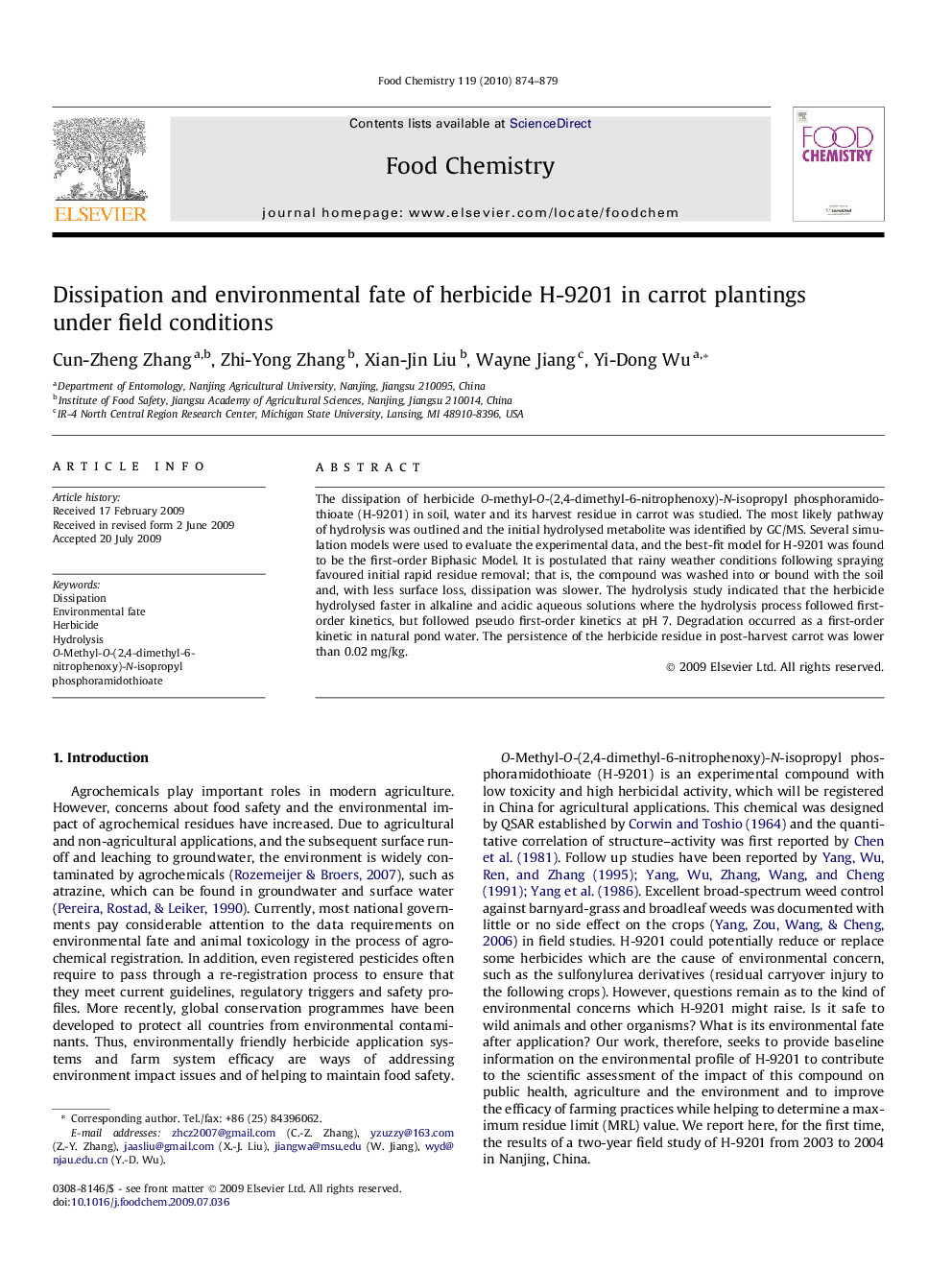| Article ID | Journal | Published Year | Pages | File Type |
|---|---|---|---|---|
| 1186391 | Food Chemistry | 2010 | 6 Pages |
The dissipation of herbicide O-methyl-O-(2,4-dimethyl-6-nitrophenoxy)-N-isopropyl phosphoramidothioate (H-9201) in soil, water and its harvest residue in carrot was studied. The most likely pathway of hydrolysis was outlined and the initial hydrolysed metabolite was identified by GC/MS. Several simulation models were used to evaluate the experimental data, and the best-fit model for H-9201 was found to be the first-order Biphasic Model. It is postulated that rainy weather conditions following spraying favoured initial rapid residue removal; that is, the compound was washed into or bound with the soil and, with less surface loss, dissipation was slower. The hydrolysis study indicated that the herbicide hydrolysed faster in alkaline and acidic aqueous solutions where the hydrolysis process followed first-order kinetics, but followed pseudo first-order kinetics at pH 7. Degradation occurred as a first-order kinetic in natural pond water. The persistence of the herbicide residue in post-harvest carrot was lower than 0.02 mg/kg.
